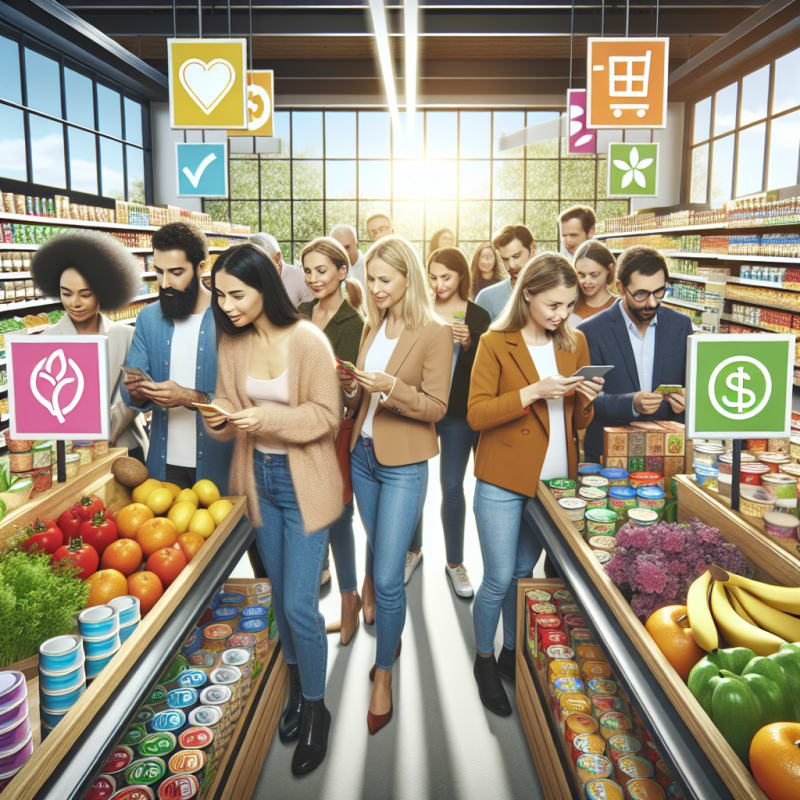How To Scan Food Labels For Allergens: A Comprehensive Guide
By The Economist Editorial Team | Updated for 2025
It happened on a Tuesday evening. Maria, a mother in Boston, watched her son’s lips swell after dinner. She had checked the pasta box, but the culprit—an undeclared allergen—had slipped past her vigilant eyes. For millions like Maria, deciphering food labels is not just a chore; it is a matter of health and peace of mind. In an era of global food trade and evolving regulations, knowing how to scan food labels for allergens is more critical than ever.
Why Scanning Food Labels for Allergens Matters
Food allergies affect an estimated 32 million Americans, including 1 in 13 children, according to the U.S. Food and Drug Administration (FDA). In Europe, the European Food Safety Authority (EFSA) reports a similar prevalence, with food hypersensitivity recognized as a growing public health issue. The rise of processed foods and complex supply chains has made allergen identification both essential and challenging.
- Hidden ingredients can be listed under unfamiliar names.
- Regulatory differences between countries affect label clarity.
- Cross-contamination is not always clearly disclosed.
Understanding Allergen Labeling Laws: US vs EU
| Region | Regulatory Authority | Required Allergen Disclosure | Notable Differences |
|---|---|---|---|
| United States | FDA | 9 major allergens (including sesame since 2023) | Plain language required; “Contains” statement often used |
| European Union | EFSA | 14 allergens (e.g., celery, mustard, lupin) | Allergens must be emphasized in ingredient list (bold/italic) |
The FDA mandates the clear labeling of nine major allergens, while the EU requires disclosure of fourteen, including less common triggers such as lupin and mollusks. Both regions enforce strict penalties for mislabeling, but the presentation and scope differ. For instance, the EU’s Food Navigator reports ongoing debates about harmonizing global standards.
Common Allergens and Their Labeling Challenges
The most prevalent food allergens, often called the “Big 9” in the US and “Big 14” in the EU, include:
- Milk
- Eggs
- Fish
- Crustacean shellfish
- Tree nuts
- Peanuts
- Wheat
- Soybeans
- Soy
- Sesame (added in the US in 2023)
- Celery, Mustard, Lupin, Mollusks (EU only)
According to a 2023 PubMed review, up to 40% of food recalls in North America are due to undeclared allergens. Terms like “casein” (milk protein) or “albumin” (egg protein) can confuse consumers, underscoring the need for digital tools and vigilance.
Step-by-Step: How to Scan Food Labels for Allergens
-
Identify the Ingredient List
Always start with the full ingredient list. In the EU, allergens are typically bolded or italicized. -
Look for the “Contains” Statement
In the US, a “Contains” statement below the ingredient list highlights major allergens. -
Check for Precautionary Statements
Phrases like “may contain traces of…” or “produced in a facility that also processes…” indicate potential cross-contact. -
Watch for Synonyms and Derivatives
Allergens may appear under scientific or alternative names (e.g., “casein” for milk, “lecithin” for soy). -
Use a Scanning App for Extra Assurance
Modern apps can decode complex labels and highlight risks instantly.
Food Scan Genius: The Smart Way to Scan Food Labels for Allergens
In 2025, technology is transforming how consumers protect themselves. Food Scan Genius (scangeni.us) is a leading app that empowers users to scan any packaged food and instantly identify allergens, dietary restrictions, and ingredient origins.
- Scan barcodes or ingredient lists using your phone’s camera
- Customizable profiles for allergies, intolerances, and dietary preferences
- Real-time updates on regulatory changes and recalls
- Supports US and EU labeling standards
User Testimonial: “As a parent of a child with multiple allergies, Food Scan Genius has been a game-changer. It takes the guesswork out of shopping, and I feel confident knowing I won’t miss hidden ingredients. Highly recommend downloading it!” — Jessica L., Berlin
Download Food Scan Genius today and join a global community committed to safe, informed eating.
Q&A: Essential Questions About Scanning Food Labels for Allergens
What are the most common mistakes when reading food labels for allergens?
The most frequent errors include overlooking precautionary statements, misinterpreting scientific names, and assuming that similar products have identical ingredients. Always read each label in detail, even for familiar brands.
How do US and EU allergen labeling laws differ?
The US requires disclosure of nine major allergens, while the EU mandates fourteen. The EU emphasizes allergens within the ingredient list, whereas the US often uses a separate “Contains” statement.
Can apps like Food Scan Genius replace manual label reading?
Apps are powerful tools that enhance safety and convenience, but they should complement—not replace—careful label reading. Regulatory updates and manufacturing changes can affect accuracy.
What should I do if I suspect a food product is mislabeled?
Immediately report the issue to the manufacturer and relevant authorities (FDA or EFSA). Retain the packaging for investigation. For recent incidents, see The New York Times coverage on food recalls.
Expert Tips for Safe Shopping and Eating
- Stay Informed: Subscribe to recall alerts from the FDA or EFSA.
- Double-Check International Products: Imported goods may follow different labeling rules.
- Educate Family and Caregivers: Ensure everyone understands how to scan food labels for allergens.
- Use Technology: Apps like Food Scan Genius offer real-time support and education.
For a recent analysis of allergen labeling trends, see BBC News.
Conclusion: Empowered Choices with Food Scan Genius
Maria’s story is not unique, but her solution can be. By understanding global labeling laws, scrutinizing every ingredient, and leveraging smart tools like Food Scan Genius, families can reclaim control over their food choices. In a world where one mislabeled item can change everything, knowledge—and the right technology—make all the difference.
Ready to scan food labels for allergens with confidence? Download Food Scan Genius and make every meal safer, wherever you are.
References
- U.S. Food and Drug Administration: Food Allergies
- European Food Safety Authority: Food Allergens
- PubMed: Food Allergen Labeling and Recalls (2023)
- The New York Times: Food Allergy Recall (2024)
- BBC News: Food Allergy Labeling (2024)
Frequently Asked Questions
- How can I instantly check a product for allergens?
- Use Food Scan Genius to scan the barcode or ingredient list. It will highlight allergens based on your profile.
- Are labeling laws the same worldwide?
- No. The US and EU have different requirements. Always check local guidelines and use apps that support multiple regions.
- What should I do if I have a severe allergy?
- Consult your healthcare provider, carry emergency medication, and use digital tools for added safety.





